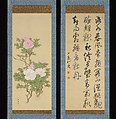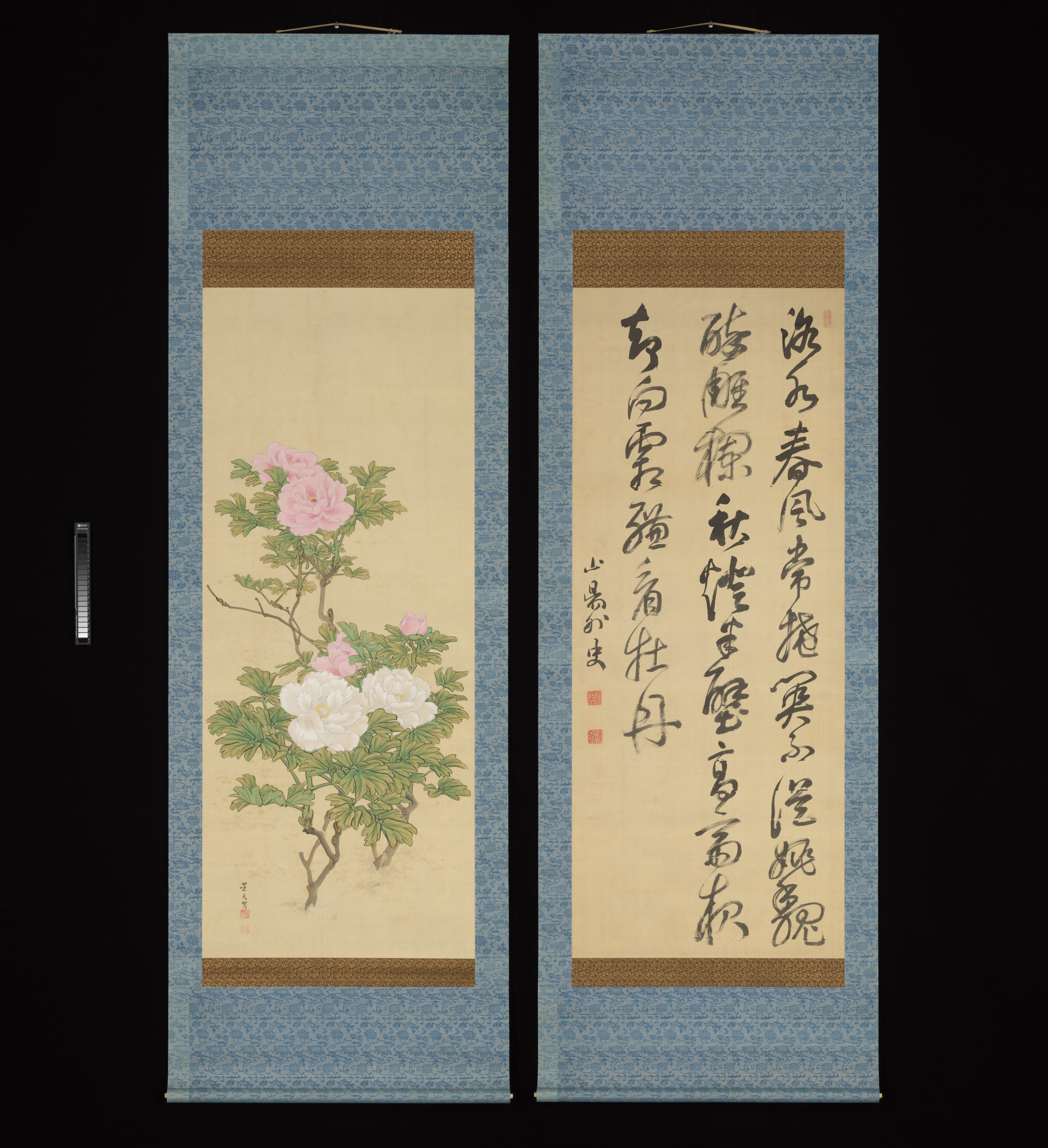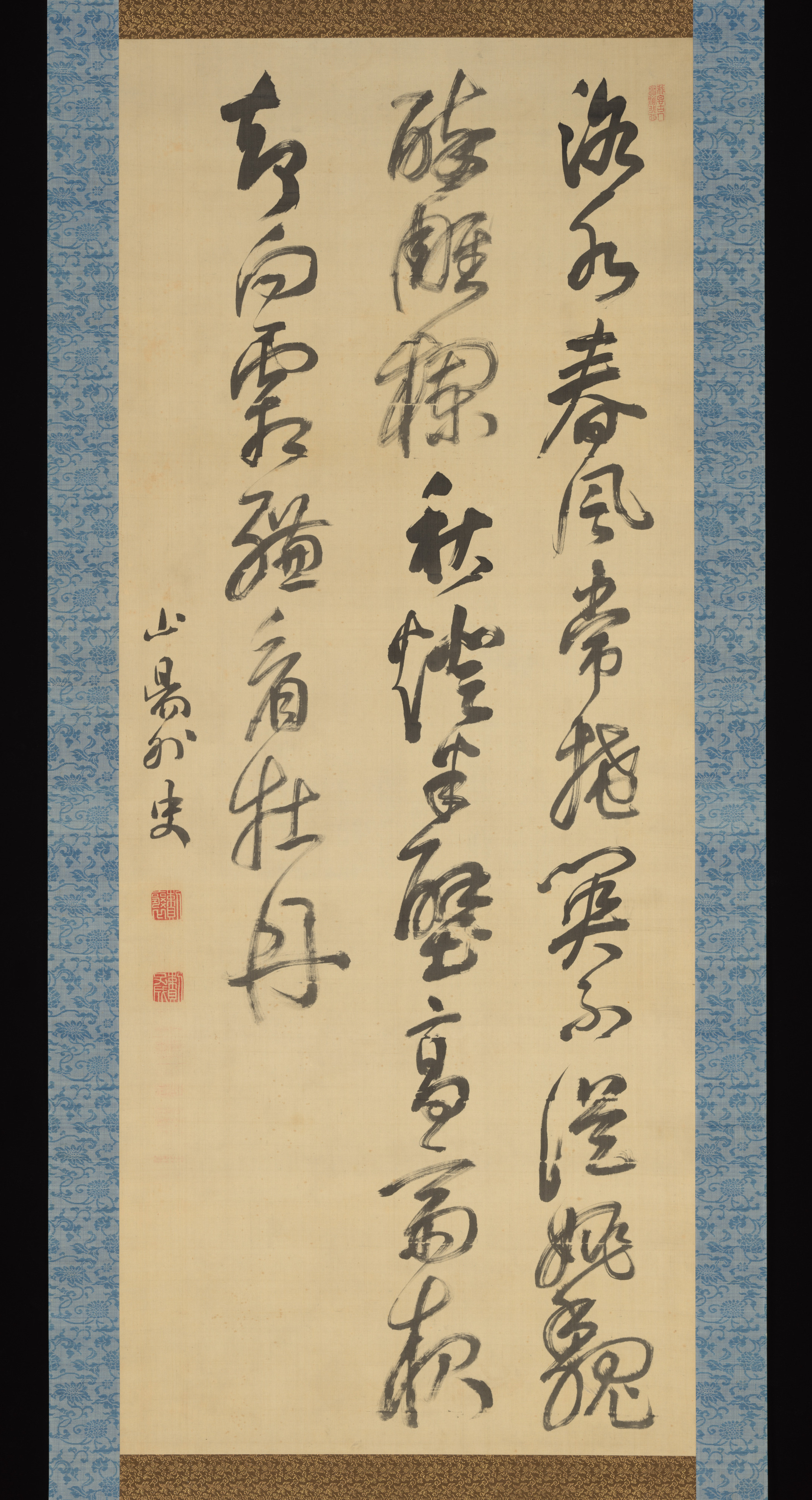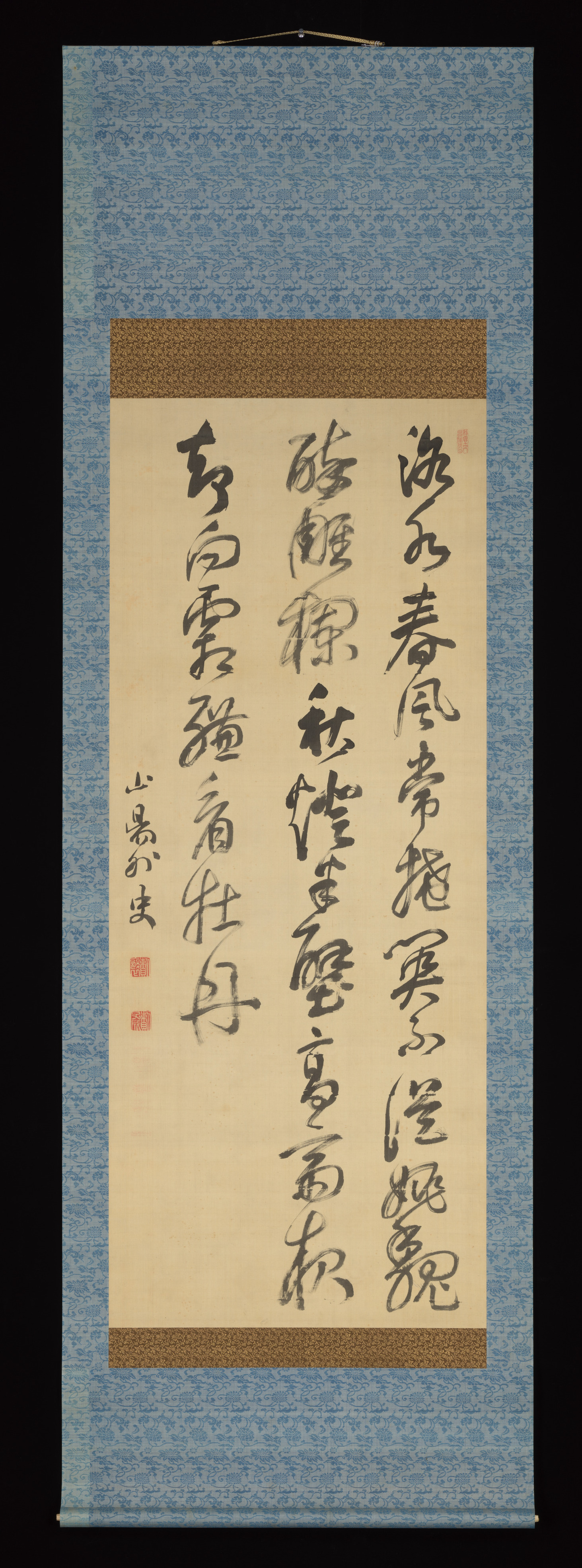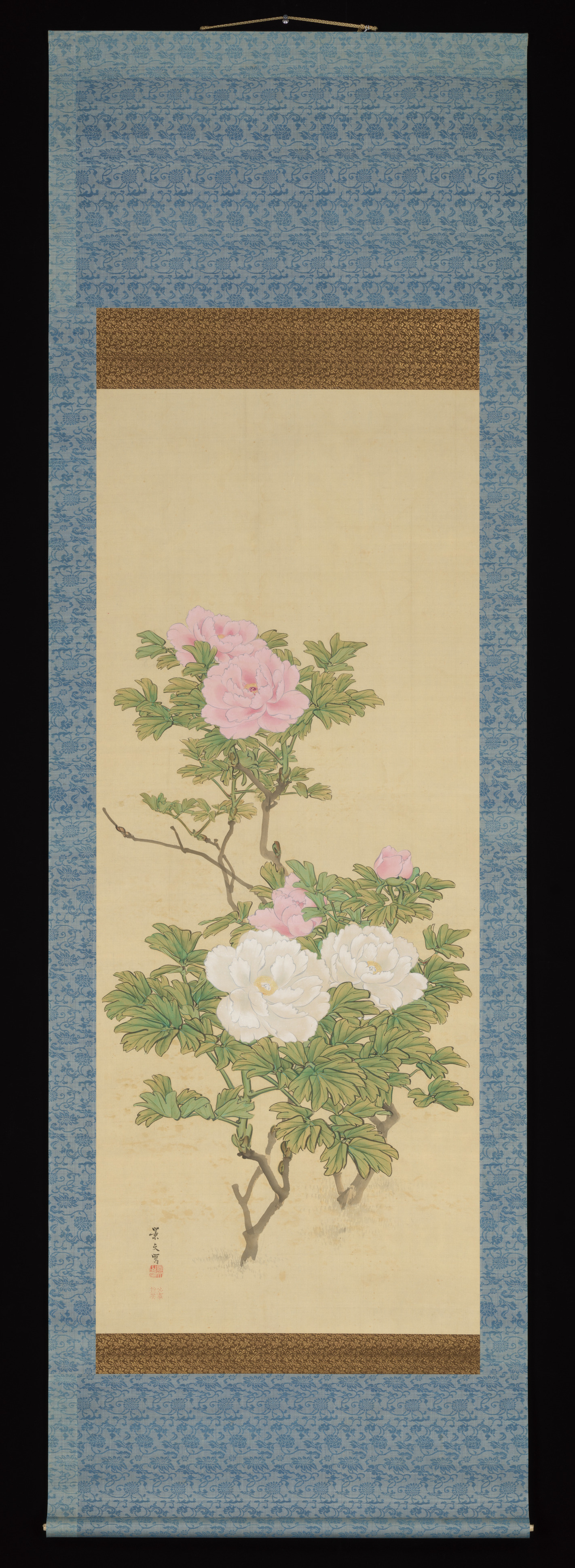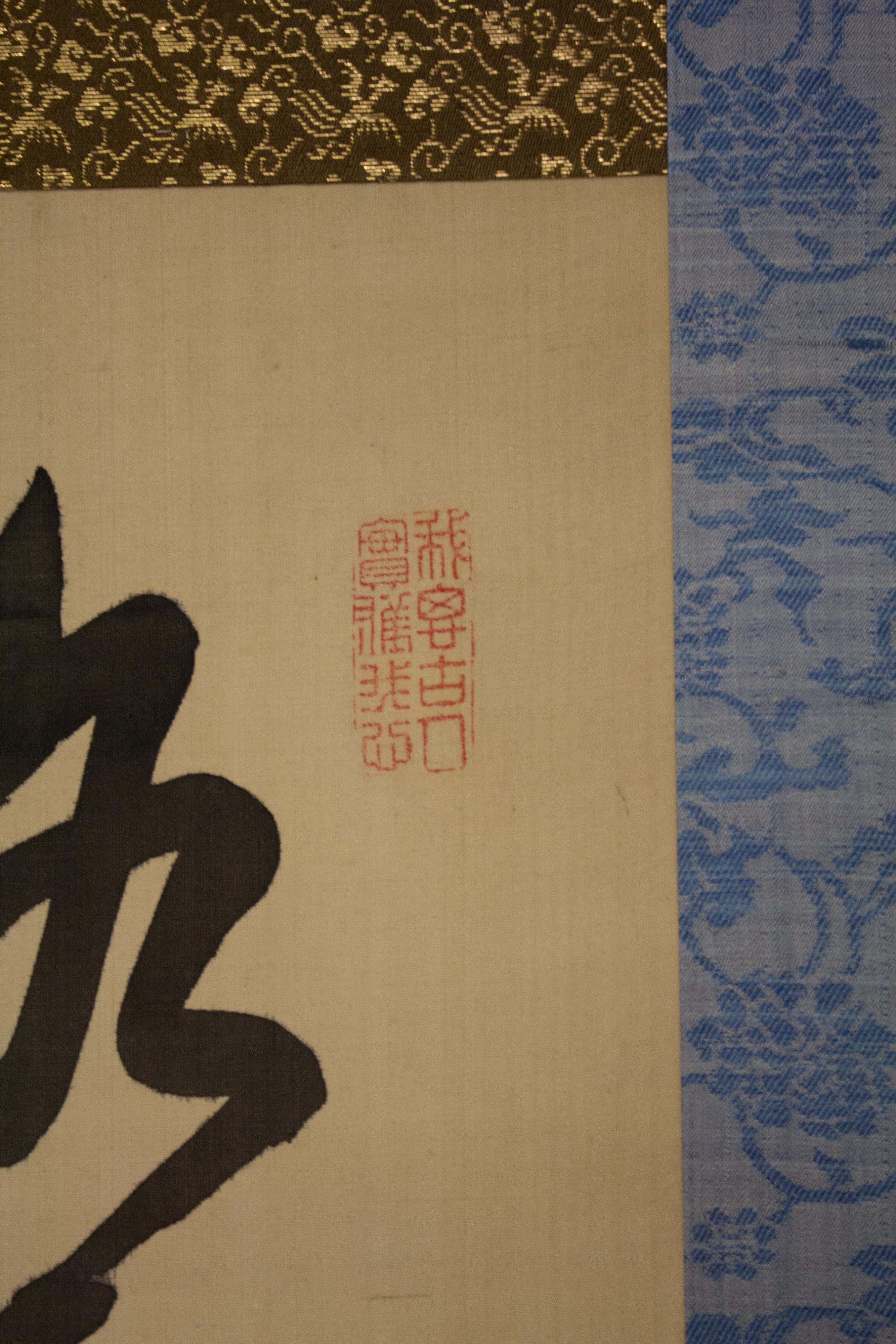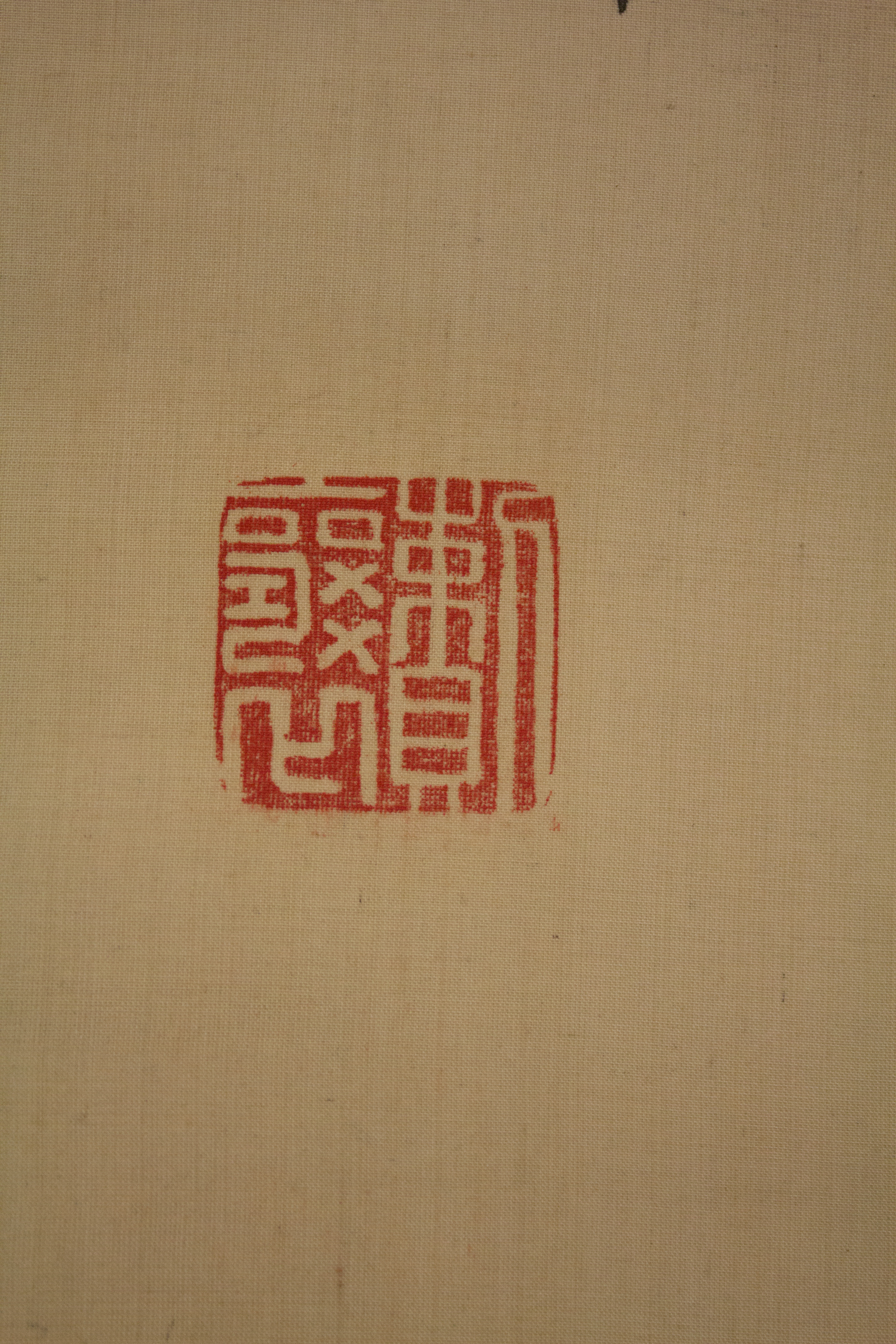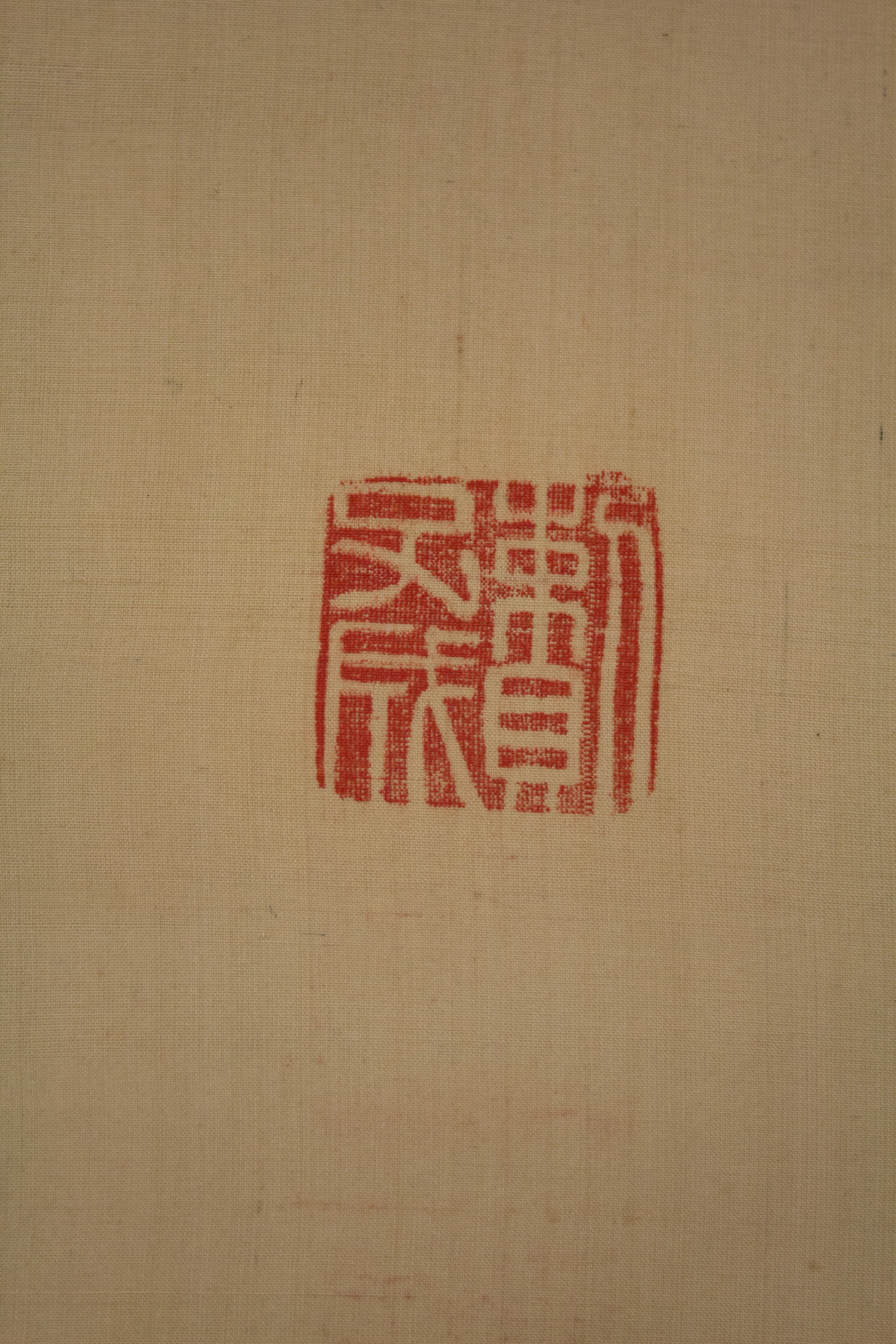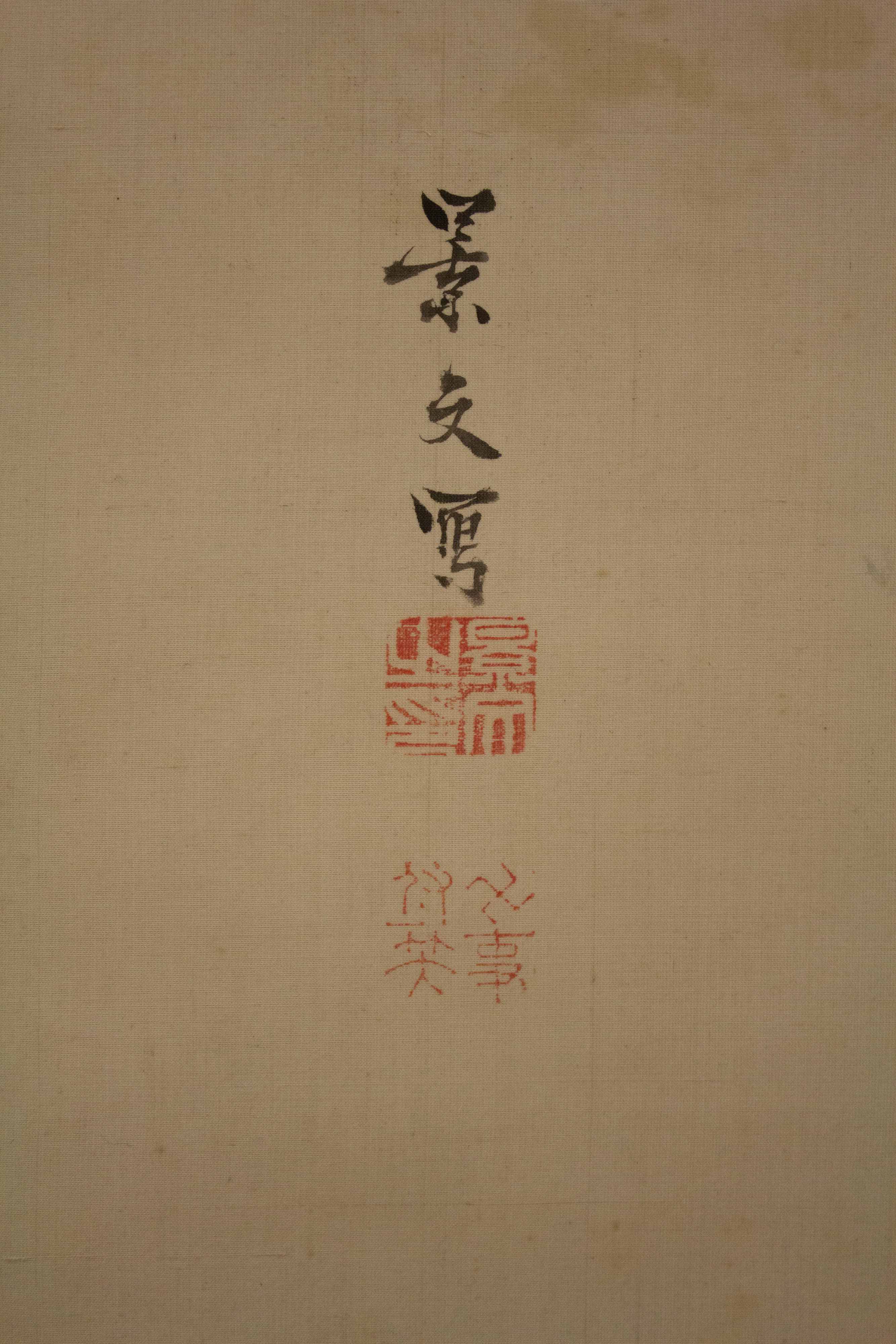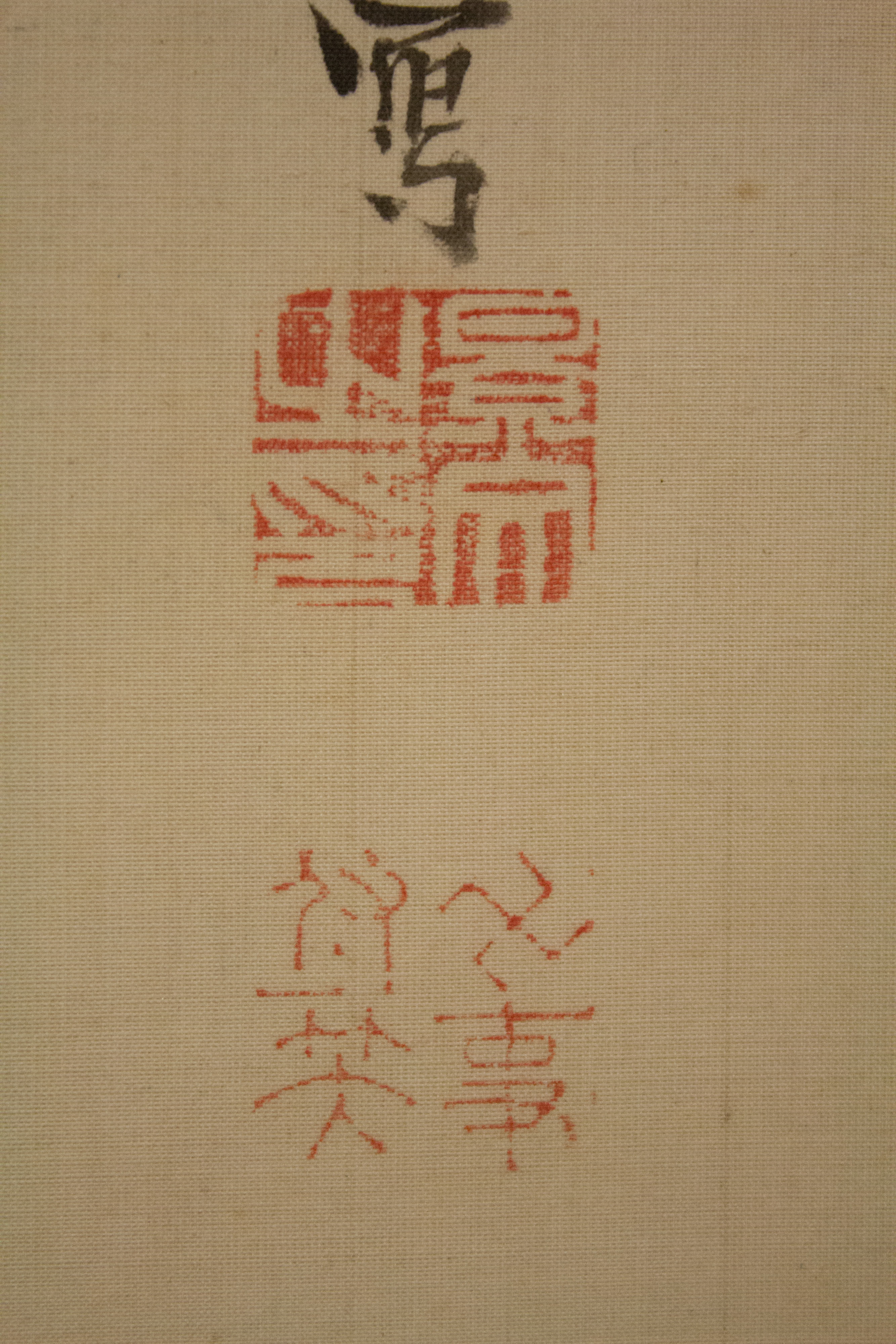Tree Peonies and Chinese Poem on Peonies
Painting by Matsumura Keibun Japanese
Inscription by Rai San’yō Japanese
Not on view
Matsumura Keibun carefully brushed these peonies to impart subtle changes of color to each petal and leaf, conveying three-dimensionality. Keibun was the half brother and pupil of Matsumura Goshun (1752–1811), who founded the Shijō school of painting in Kyoto. A quatrain of Chinese verse, composed and fluently brushed in cursive and semicursive scripts by the celebrated Confucian scholar Rai San’yō, praises the peonies:
洛水春風常掩關 不從姚魏酔雕欄
秋燈半壁高齋夜 却白霜縑看牡丹
As spring breezes reach the capital’s river,
my gate remains shut,
and I do not become drunk and lean on balustrades
to admire peonies of the houses of Yao and Wei.
Rather, on this autumn night,
when a lamp lights up half of my study,
I prefer to gaze quietly upon
these painted peonies on the frost-white silk.
—Trans. Tim T. Zhang
This image cannot be enlarged, viewed at full screen, or downloaded.
This artwork is meant to be viewed from right to left. Scroll left to view more.
